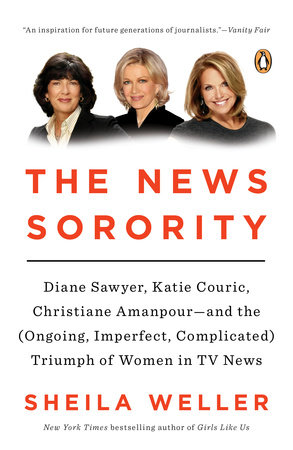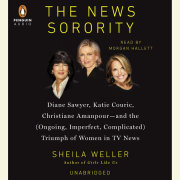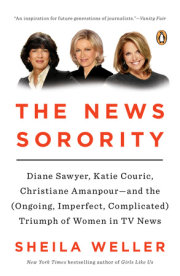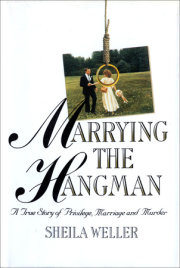INTRODUCTION
The News You Give Begins with
the News You’ve Lived
Diane, Christiane, Katie: 1969, 1997, 2000
I. Pushing Past Grief: Diane, 1969
Twenty-three-year-old Diane Sawyer (she used her real first name, Lila, ironically, only in affectionate letters) was working as the first ever full-time female news reporter in her hometown of Louisville, Kentucky— on WLKY, Channel 32—in mid-September 1969. She had been on the job for two years, and she—a Wellesley graduate and former beauty queen— was itching to leave for a bigger opportunity, in the nation’s capital. Still, Diane’s years at WLKY had not been uneventful.
Louisville in the late 1960s had a roiling temper. Some of its residents were hell-bent on overturning the recent federally mandated civil rights advances. When black demonstrators peacefully marched through the streets to protest the stubbornly still segregated neighborhoods, angry whites rushed them, bearing swastikas, hurling bottles. On top of that, the country had just passed through a nightmare of a year, and Diane Sawyer of WLKY had reported on all of it.
Diane and her colleague Bob Winlock—who rejected being “the black reporter” as much as she disliked being “the female reporter”—witnessed painful backlash against advances they had both been a part of. Diane was kept off the riot-scene beat by her gallant bosses—at least one frontline reporter had gotten beaten—but the city’s racial anguish was on clear display everywhere, including during the emotionally fraught press conferences she covered for the station.
Violence became commonplace. Early in her tenure at WLKY, Martin Luther King Jr. had been spat upon by a little white girl who couldn’t have been more than seven. During another visit, the civil rights leader’s skull had barely evaded a rock hurled through his car window (he later held the rock high and pronounced it a “foundation” of his struggle there). Then, of course, came Dr. King’s murder—close by, in Memphis—and that of Bobby Kennedy, in Los Angeles, during that surreally violent patch of spring to summer 1968. “Diane was disconsolate” at both assassinations, the station’s general manager, Ed Shadburne, says. Still, she dutifully went out to get person-on-the-street responses. That was being a reporter: Tuck in the pain and do your job. You were a witness.
But that was the ironic thing. Diane had already been a witness— indeed, a participant—in some amazing ground-level integration gains almost a full decade earlier. Her junior high and high school, Seneca, had integrated startlingly early, in 1957, well before the city’s neighborhoods, restaurants, restrooms, and theaters had stopped barring blacks or roping them off in dingy “Coloreds” quarters. By a fluke of the school’s newness and geography, the 1957–1963 Seneca kids (“a third white, a third Jewish, a third black,” the alums today like to proudly exaggerate) and their teachers were on their own, improvising a racial amity.
In 1958, when Diane was in the eighth grade (four years before James Meredith’s federally assisted singular integration of the University of Mississippi), white boys in ducktails and low-slung jeans had written GO HOME, NIGGER! on the walls when the first black students bravely but nervously entered, and some of the kids were beaten. But by the time her class reached eleventh grade, in 1961, the students were protesting restaurant segregation together. When the boys’ basketball team traveled to racist Kentucky towns for away games, the white players refused to go into the coffee shops that didn’t allow their black teammates; they all ate in their bus. Now, in 1969, the still resonating killings of Martin Luther King and Bobby Kennedy seemed like a Molotov cocktail hurled against those fragile, cherished Seneca High advances.
Copyright © 2014 by Sheila Weller. All rights reserved. No part of this excerpt may be reproduced or reprinted without permission in writing from the publisher.











